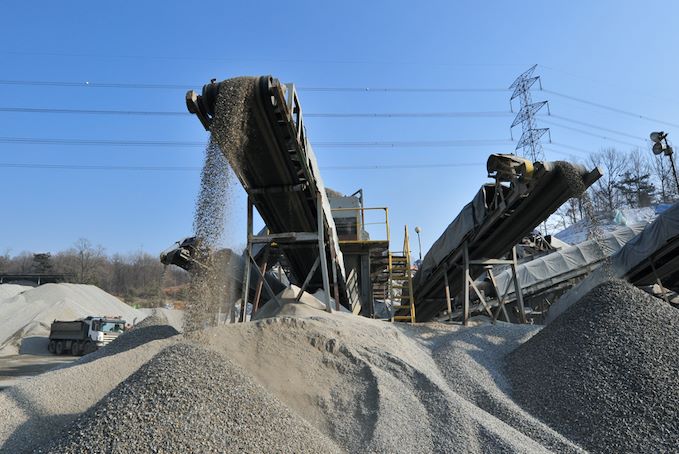Aggregate is a plentiful granular material mix typically made of sand, stone, gravel, recycled concrete and crushed rock. It gives volume and adds natural resistance to erosion, making it a popular material in construction. Aggregate can range from sand to stone and can be separated into finer granule forms to coarse particulates.
Here’s how aggregate is being used in PNG:
Concrete
The biggest use of aggregate due to its practical use is for architectural buildings. Majority of modern human structures are built using some form of concrete. Concrete is a mix of aggregate, cement and water. Aggregate is specifically used in this recipe as a skeletal structure. Both coarse and fine aggregates are used in the process and depending on how coarse the aggregate is, will determine the quality of the material, and the finer aggregate needs more cement.
Asphalt, Roadstone and Pathways
We tend to forget that most roads, pavements and carparks are made from aggregate materials. While aggregate is used for practical projects, there’s also a decorative use for aggregate. Exposed aggregate is created by pouring in aggregate and removing the top layer to expose the material underneath, used particularity for garden pathways and driveways.
Railway Ballast
Trains can weigh more than 20,000 tonnes and a special type of road must be created to uphold their large load. Aggregate materials commonly consist of igneous rocks like granite as they are highly resistant to pressure such as trains.
Drainage, Pipes and Voids
Hard and rocky materials tend to filter water a lot easier than soil materials. As such aggregate is used for water and sewage draining systems. Aggregate can also be used to stop sharp objects from piercing drain systems and as the go-to ‘void filler’ for projects like foundations.
Overall, aggregate is used in PNG for many reasons, in particular to enhance durability and ensure projects are long-lasting. The different types and materials used in aggregate provides distinctive benefits to a range of industries in PNG.


